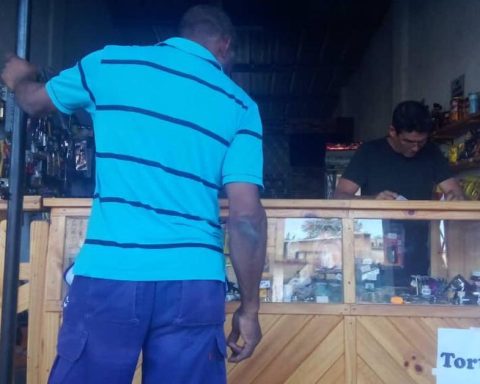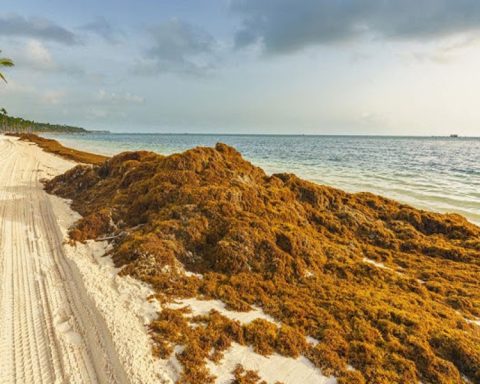
The salt shortage has been a serious issue on the streets of Cuba for a long time, but it was not until this Wednesday that the official press has taken care of the. In a long article, cubadebate he echoes the complaints of his own readers and admits that “for several months there has been instability in the commercialization of salt in the country.”
The problem is not so much that there is no salt, because, as the note recalls from some statements by the Minister of Energy and Mines, Vicente de la O Levy, last February, there are more than 9,000 tons stored, but the distribution . “Problems with transportation have affected the deficit in delivery to consumers,” they indicate.
In what seems like a justification for the big question –how is it that a country surrounded by seawater lacks salt?–, the text devotes a great deal of space to arguing that most of the island’s salt pans are located in the area Oriental. This, says the director of the Salt Company (Ensal), Jorge Luis Bell Álvarez, “does not respond to whims or lack of investment, but to the fact that very specific weather conditions are required for its location”, that is, where ” that there is little rain and a lot of wind”. Two of the plants are located in Guantánamo and the rest in Las Tunas, Camagüey, Villa Clara and Matanzas.
In what seems like a justification for the big question –how is it that a country surrounded by seawater lacks salt?–, the text devotes a great deal of space to arguing that most of the salt flats are located in the eastern zone
“Guantánamo is the one that produces the most salt, because it has a semi-arid climate, very dry and with little rain all year,” the official refers, educationally, while in Matanzas “salt can only be produced in the driest and windiest months , which are April, May, July and September. In the other months it rains a lot and the water dissolves the salt that has formed.”
The salt mines of this last province present another problem, according to the president of the Geominero-Salinero Business Group, Fabio José Reimundo: “Every time a cyclone passes, it takes away the entire installation, because they are dams that separate the water and from there The salt crystallizes. When strong waves come, it gets in and destroys the salt. There are many cyclones that pass through here, but in Guantánamo they hardly pass.”
Despite everything, the director of Ensal assures that the state company “has managed to maintain the (limited) production and distribution of salt throughout the national territory, despite the resource difficulties it faces.”
The same official explains a convoluted distribution process according to the number of members of the family nucleus for the regulated basket, according to which in the first month of the quarter, for example this March, 4,100 tons of salt are distributed “and all the family nuclei receive a bag of salt per nucleus”, but in April, 2,800 tons are only distributed to family nuclei that have more than four people. “In the third and last month of the quarter, between 900 and 1,000 tons are distributed and salt is only received by the families of many consumers, who still have a few bags left to take.”
“Now there shouldn’t be any more, because any little thing they take out that has been ‘lost’ time, the resellers grab it right away, they repackage it and you know, at an exorbitant price”
What the reader does draw a conclusion from is that the figures included in the cubadebate They are not the same as on the street. Thus, the price proposed per kilogram of salt in the warehouses, which the director of the company puts at 25 pesos, can go up to 136 pesos, as this newspaper was able to verify a few days ago in Luyanó, where it was sold only as a released product.
“Now there shouldn’t be any more, because any little thing they take out that takes time lost, The resellers grab it right away, they repackage it and you know, at an exorbitant price”, says a neighbor of the place, who managed to buy a pound.
There is also an inconsistency between the paper and reality in the costs of salt to the left. cubadebate It says that the package is 150 pesos, but this Wednesday in various markets in Havana it was 250 pesos for a pound and a half package. “They sell it to you as a kilogram, but you can see that it brings less, and not always with sufficient quality. Sometimes it’s kind of wet, sometimes it’s very fat, and sometimes it’s good, yes, but that depends,” laments a resident of El Vedado.
In San Antonio de los Baños, Ana María was able to buy just one small repackaged bag. “I don’t understand why salt is also scarce, a country surrounded by sea!” laments the woman, married with a young daughter. “That salt shouldn’t have come importedIt doesn’t have to come from anywhere.”
Those with traveling relatives have added salt to the list of requests to bring from abroad. “My mother sent me the message that I was not going to forget to bring her salt,” a Havanan visiting Spain tells this newspaper. “But the last time I took him was from Bogotá and I almost missed the flight, because they made me open the suitcase to find out what that ‘powder’ was in my luggage. It was quite painful to explain to the Colombians that it was salt to take to a island”.
Faced with all these vicissitudes, the response of the authorities via the official press is, as usual, voluntarist. “We are looking for alternatives to improve salt transportation and change the modal matrix,” says Dolcey Castellanos, Ensal’s director of operations. For example, “use containers that can be disassembled into railway plates” or “carry out an investment” in the Santa Clara salt flats to “increase production capacity from four to ten tons per hour.” At the moment, nothing has been finalized.
________________________
Collaborate with our work:
The team of 14ymedio He is committed to doing serious journalism that reflects the reality of deep Cuba. Thank you for accompanying us on this long road. We invite you to continue supporting us, but this time becoming a member of our newspaper. Together we can continue transforming journalism in Cuba.















